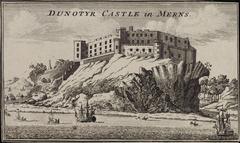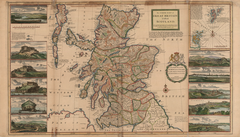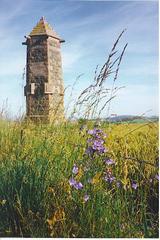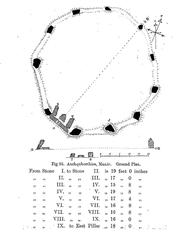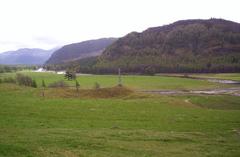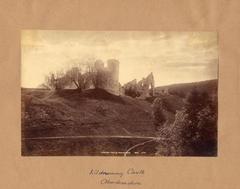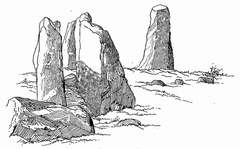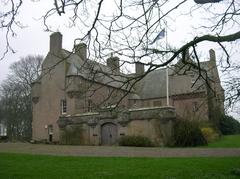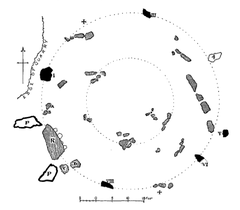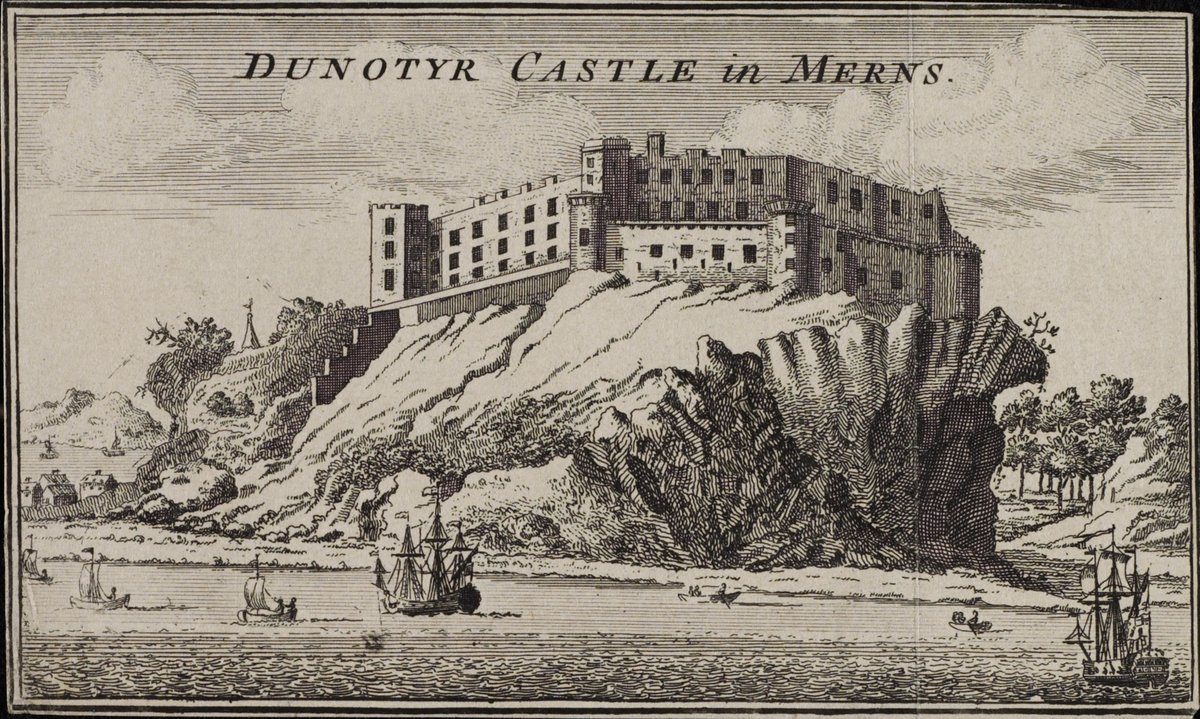
Dunnottar Castle: Visiting Hours, Tickets, and Scotland’s Historic Coastal Fortress
Date: 14/06/2025
Introduction
Dunnottar Castle, perched atop a dramatic headland near Stonehaven, Aberdeenshire, is among Scotland’s most iconic and historically significant castles. Overlooking the North Sea, its evocative ruins, steeped in centuries of history, offer visitors breathtaking scenery and a powerful connection to Scotland’s past. From its earliest fortifications in the 5th century to its role during the Wars of Scottish Independence and the safeguarding of the Honours of Scotland, Dunnottar Castle is a testament to the nation’s resilience and cultural identity.
This detailed guide provides all the essential information for planning your visit, including opening hours, ticket prices, accessibility details, travel tips, and an overview of the castle’s rich history and unique features. Whether you’re a history enthusiast, nature lover, or simply seeking unforgettable coastal views, Dunnottar Castle is a must-see destination in Aberdeenshire.
Table of Contents
- Introduction
- Dunnottar Castle’s Historical and Cultural Significance
- Visiting Information: Hours, Tickets, Travel & Accessibility
- Exploring the Castle: What to Expect
- Nearby Attractions and Things to Do
- Frequently Asked Questions (FAQ)
- Visual Resources and Virtual Tours
- Conclusion and Call to Action
- References
Dunnottar Castle’s Historical and Cultural Significance
Origins and Early Importance
The origins of Dunnottar Castle trace back to at least the 5th century, when a chapel was reputedly founded by St Ninian, who is said to have converted the local Picts to Christianity (Call of the World; Heritage Explore). Its strategic headland location naturally lent itself to defense, later enhanced by medieval fortifications. By the reign of William the Lion (1165–1214), the site had become a center of local administration.
The Keith Family and Medieval Expansion
Dunnottar came under the control of the powerful Keith family in the 13th century, who held it for over 400 years (Royal Arch Riverside Park). William Keith’s construction of a substantial tower house in the late 14th century marked the beginning of significant architectural development, despite a brief excommunication for building on consecrated ground (Heritage Explore). The castle complex was further expanded in the 15th and 16th centuries, notably by George Keith, 5th Earl Marischal, who transformed it into a grand residence.
Wars of Independence and Royal Connections
During the Wars of Scottish Independence, Dunnottar played a pivotal role. In 1297, William Wallace captured the castle from the English and, as chronicled, burned the church with English soldiers inside (Heritage Explore). The castle served as a royal residence for Scottish monarchs, including James IV and Mary, Queen of Scots (Royal Arch Riverside Park).
Religious Conflict and the Covenanters
The 17th century brought religious turmoil, with Dunnottar used as a prison for Covenanters—Presbyterians resisting Anglican rule. The notorious “Whigs’ Vault” became a grim symbol of religious persecution (Call of the World).
The Honours of Scotland and the Civil War
Perhaps the most famous episode in Dunnottar’s history is its role in safeguarding the Honours of Scotland (Scottish Crown Jewels) during the English Civil War. As Cromwell’s forces advanced, the Honours were secretly smuggled out and hidden to prevent their capture (Royal Arch Riverside Park)—a story that remains central to Scottish national identity.
Decline and Restoration
The castle was abandoned in the 18th century after the Keiths lost their estates for supporting the Jacobite cause. It changed hands several times until restoration efforts began in the early 20th century, preserving its ruins for future generations (Two Bears Cottage; Heritage Explore). Today, Dunnottar is a Scheduled Monument and a cherished part of Scotland’s living heritage.
Cultural Impact and Modern Significance
Dunnottar Castle’s dramatic silhouette has inspired artists, writers, and filmmakers, notably serving as the model for Disney’s “Brave” and a location in the 1990 film “Hamlet” (Wikipedia). The castle remains a focal point for local festivals, educational programs, and community events (Scotland’s Islands), reinforcing its role as a living symbol of Scottish resilience and pride.
Visiting Information: Hours, Tickets, Travel & Accessibility
Opening Hours
- Summer (April 1 – September 30): 09:00–18:00 (last entry at 17:00)
- Winter (October 1 – March 31): 10:00–15:00, 16:00, or 17:00 depending on the month (last entry is always one hour before closing)
- Closed: December 18, 25, 26 and January 1, 2
Opening hours may change due to weather or special events. Always check the official website before your visit.
(24 Countries; Historic Houses)
Ticket Prices
- Adults: £11.50
- Children: £5.00
- Guidebook: £5.00 (available at the ticket kiosk)
- Payment: Card only at the castle
Advance online booking is recommended, especially during peak periods.
(24 Countries)
Getting There
- By Car: About 20 miles south of Aberdeen via the A92, with a free car park near the site. The car park is small—arrive early to secure a space (Coconuts and Camels).
- By Bus: X7 and 107 services stop near the castle car park (Watch Me See).
- By Train: Stonehaven station is the closest; from there, take a taxi, bus, or walk.
- On Foot: The coastal walk from Stonehaven harbour to the castle, about 2.7 miles round trip, offers spectacular views (Coconuts and Camels).
Accessibility
- Steps: Access requires descending and ascending 200+ steps; there are no ramps or lifts (Coconuts and Camels).
- Mobility: The castle is not wheelchair accessible. The coastal path provides good views for those who cannot manage the steps (24 Countries).
- Facilities: Toilets are available inside the castle. Parking is free for cars and pre-booked coaches.
Facilities and Safety
- Food and Drink: No café on site, but a catering van sells drinks and snacks in the car park (Watch Me See).
- Weather: The site is exposed to wind and rain. Dress in layers and bring waterproof clothing.
- Children: The castle is family-friendly but requires supervision due to steep drops and uneven ground.
Exploring the Castle: What to Expect
Key Features
- Ruins: Eleven main buildings, including the tower house, chapel, barracks, and the infamous Whigs’ Vault (For Travel Lovers).
- Grounds: Rugged terrain with panoramic views—perfect for photography.
- Interpretation: Informational plaques and a free app provide historical insights (Watch Me See).
- Duration: Allow 1–2 hours for exploration; add time for the coastal walk or beach access.
Guided Tours and Events
- Guided Tours: Offered seasonally, providing in-depth historical context. Check the official website for schedules.
- Special Events: Medieval reenactments and local festivals are held throughout the year (Scotland’s Islands).
Photography Tips
- Best Light: Early morning or late afternoon for dramatic shots. The coastal path offers panoramic exterior views.
- Drone Policy: Drones are only permitted with advance approval (24 Countries).
Nearby Attractions and Things to Do
- Stonehaven Harbour: A picturesque spot for dining and exploring local shops.
- Stonehaven Tolbooth Museum: A small museum highlighting local history.
- Aberdeenshire Coastal Trail: Excellent for hiking and wildlife spotting.
- Wildlife: Watch for dolphins, seals, and seabirds along the coast (Coconuts and Camels).
Frequently Asked Questions (FAQ)
Q: Are tickets required to visit Dunnottar Castle?
A: Yes, tickets are required and can be purchased online or at the entrance.
Q: What are the castle’s opening hours?
A: Generally 09:00–18:00 in summer, with shorter hours in winter. Always check the official website for updates.
Q: Is the castle wheelchair accessible?
A: No, due to extensive steps and rugged terrain.
Q: Are guided tours available?
A: Yes, check the website for availability and schedules.
Q: What should I bring or wear?
A: Sturdy footwear, layered clothing, and waterproof gear are recommended due to uneven terrain and variable weather.
Q: What nearby attractions should I visit?
A: Stonehaven’s harbour, Tolbooth Museum, and the Aberdeenshire Coastal Trail are all nearby.
Visual Resources and Virtual Tours
- Official Website’s Gallery and Virtual Tours
- View Dunnottar Castle Location on Google Maps (replace with actual link)
Conclusion and Call to Action
Dunnottar Castle is a jewel of Scotland’s northeast, where striking scenery meets a storied past. Its imposing ruins, perched atop sea cliffs, invite exploration and reflection on centuries of Scottish history. By planning ahead—consulting opening hours, purchasing tickets in advance, and preparing for the terrain—you’ll ensure a memorable and rewarding visit.
To enrich your experience, consider downloading the Audiala app for audio tours and up-to-date visitor information. Explore Stonehaven’s coastal walks, delve into local history, and share your adventure on social media. For further insights, check the official website and trusted travel resources linked below.
References
- Call of the World
- Heritage Explore
- Two Bears Cottage
- Royal Arch Riverside Park
- SpottingHistory
- ScotlandPackage
- CastlesInScotland
- Dunnottar Castle Official
- Wikipedia
- Scottish Insider
- Countryfile
- Scotland’s Islands
- Coconuts and Camels
- Watch Me See
- 24 Countries
- For Travel Lovers
- Historic Houses
